Jobs and money follow new agricultural processing in SD
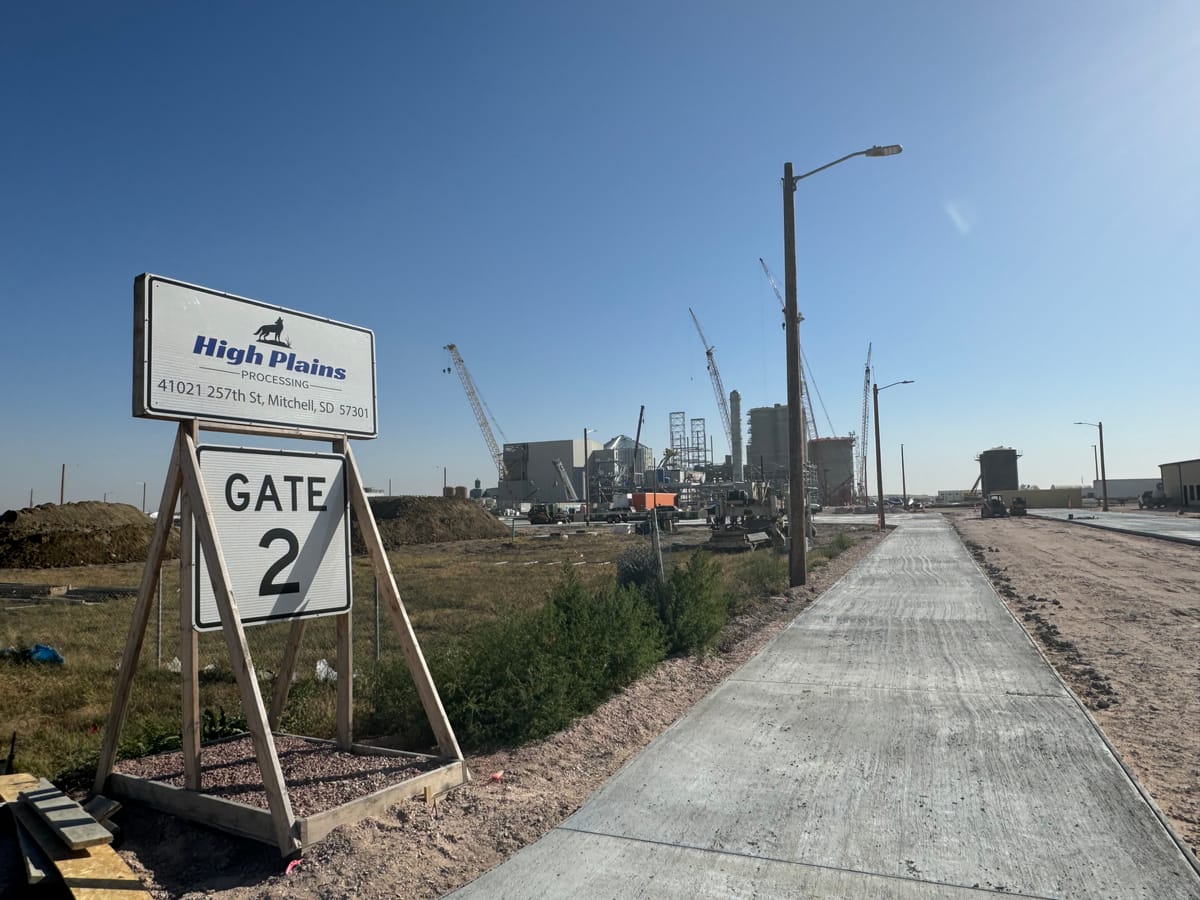
MITCHELL, S.D. – Several cranes tower above a busy construction site along state Highway 37 south of Mitchell where work is rapidly progressing on a $500 million grain plant that will be the latest addition to South Dakota’s growing agricultural processing industry.
For generations, the state has served as an agricultural production hub in the Great Plains, growing millions of bushels of corn and soybeans and raising millions of cows and hogs annually. For many years, most of the state’s high-output food producers shipped their goods to be processed at plants elsewhere.
As those commodities left the state, so too did the businesses and jobs needed to process agricultural products into their final form. Rural communities in South Dakota lost the potential for growth in local employment, housing and economic development generated by agricultural processing plants.
“Historically, for some reason, here in South Dakota we’ve been content to raise commodities — corn, soybeans, cattle and hogs – and ship them out of state for processing,” said Scott VanderWal, president of the South Dakota Farm Bureau.
But over the past 30 years, and with increasing frequency in recent years, the state agricultural industry has begun to take advantage of what insiders refer to as “added value.” The term refers to the ability of those in the agriculture industry to generate more revenue from a single product. For instance, growing corn and then using it for food products, animal feed and in ethanol production.
By processing soybeans closer to where they are grown, South Dakota farmers can grow and sell more grain, which leads to spin-off revenues for a host of businesses, including in transportation, fuel, feed and machinery.
“We’re now finding out that we can make a little more money, generate local economic activity and create more jobs if we start adding value to the things we produce,” VanderWal told News Watch.
Details reveal size, scope of new plant
The High Plains Processing plant, now under construction 2 miles south of Mitchell, is being built by South Dakota Soybean Processors, a farmer-owned business that has a soybean plant in Miller and another in Volga, where the company is headquartered.
CEO Tom Kersting said the new plant will provide good-paying jobs now and well into the future and create new revenues for a host of businesses and farmers throughout the region. It will also generate significant new property taxes for local governments and sales taxes for state government, he said.
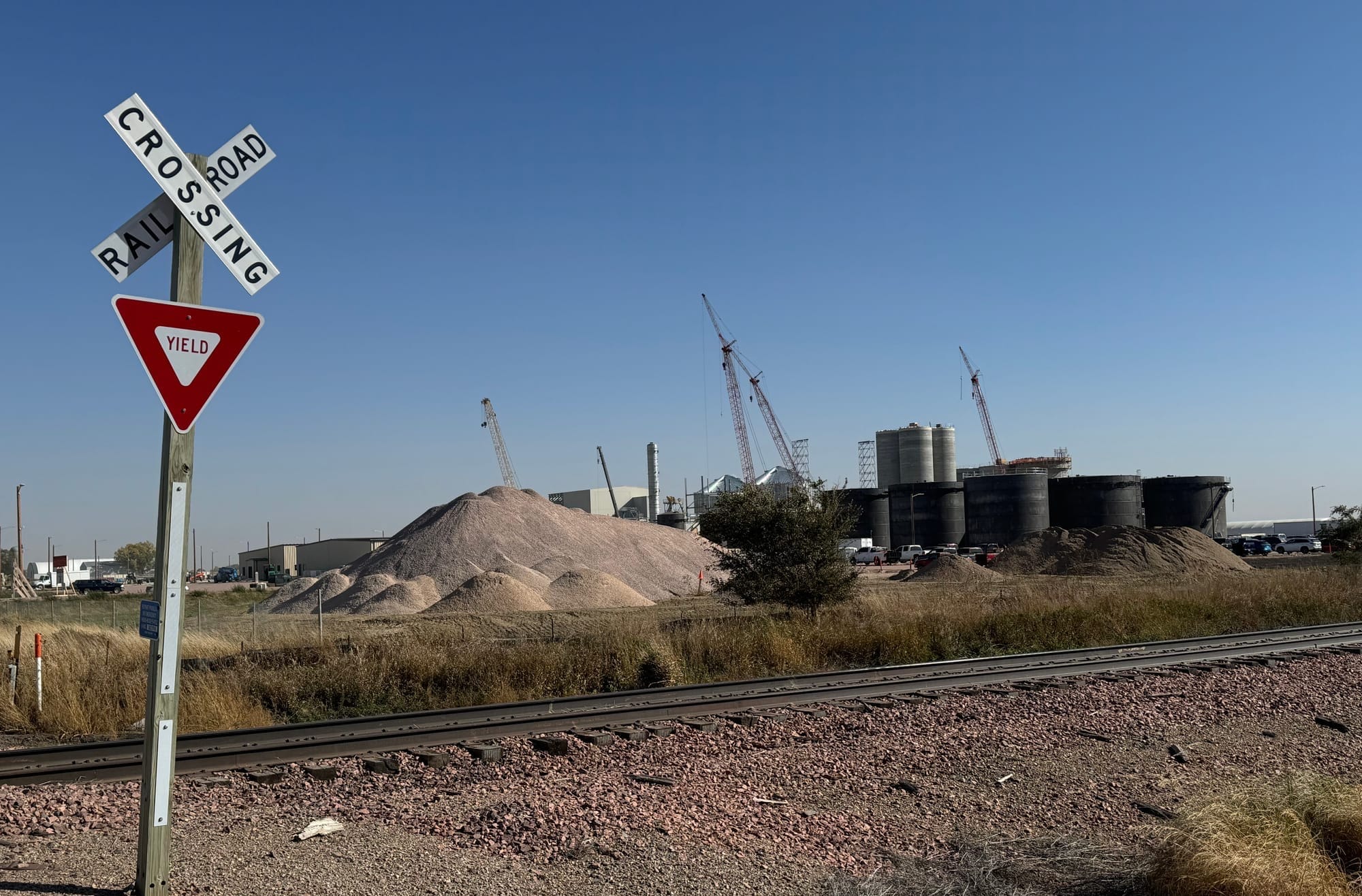
Construction costs are estimated to be about $500 million, and the target date for operations to begin is October 2025, Kersting told News Watch. The plant will be able to process soybeans as well as sunflower seeds and other grain products if market conditions warrant, he said.
Finished products will mainly include oils and animal feed. The plant will have capacity to process 100,000 bushels of soybeans a day (about 35 million bushels a year), which makes it the second-largest plant behind the AGP soybean plant in Aberdeen, which has an annual capacity of 50 million bushels.
Empowering and connecting women in agriculture
South Dakota woman’s podcasting and networking effort wins $1.2 million grant to help emerging female leaders statewide expand their leadership potential.

The Mitchell plant has about 300 construction workers on site now and expects to employ 75 to 85 full-time employees once operational. The expansion will create another dozen or so positions that will work at the company offices in Volga in support of the plant.
Kersting said the addition of new, consistent capacity for grain products at the Mitchell plant should not only stabilize but also increase the prices paid to local soybean and sunflower farmers.
“Without it, you’d be much more dependent on the export markets for pricing,” he said. “By having the demand locally, and having it year-round, there’s an opportunity for higher prices for farmers.”
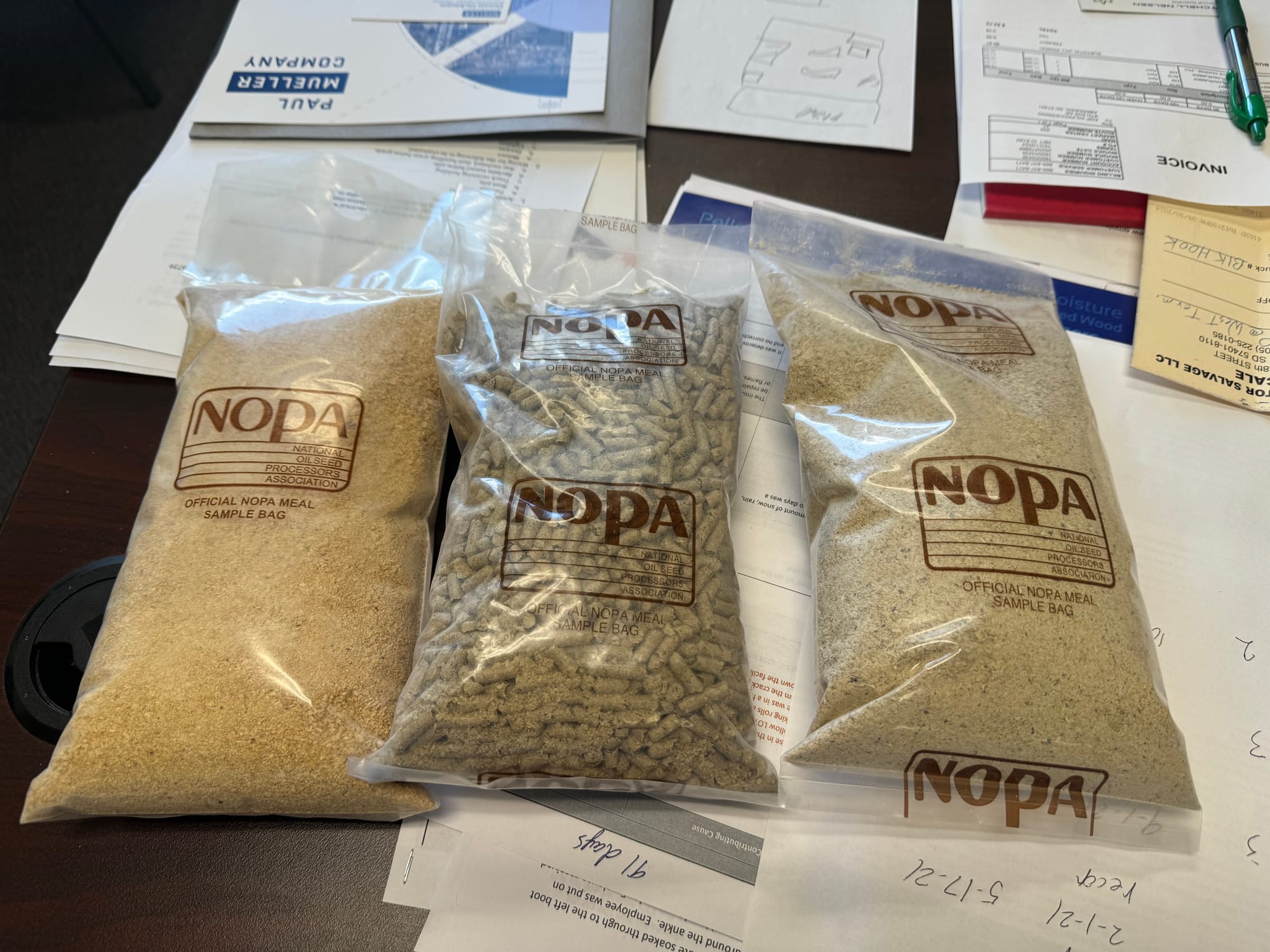
In addition to oils, used in biofuels and in some food products, the plant will also produce seed meal that is used to feed animals, mainly hogs and poultry, he said. Kersting said that once fully processed, a 60-pound bushel of soybeans will yield about 44 pounds of meal feed, 11 pounds of oil and 4 pounds of husks, with a slight amount of moisture loss making up the final pound.
The new plant will be strategically located just 2 miles from Interstate 90 and within shouting distance of the Burlington Northern Santa Fe Railroad line, Kersting said.
Benefit to Mitchell and well beyond
The excitement over the plant’s potential for economic benefits is palpable even in a brief conversation with David Lambert, regional development director for the Mitchell Area Chamber of Commerce.
“We’re just tickled,” he said. “From our perspective, we feel that the impact is going to be huge.”
Lambert said the plant’s economic impact will be felt most in Mitchell, where he expects many workers will live and spend money. The plant will create new revenue opportunities in several economic sectors, including housing, grocery, retail and transportation, he said. Nearby cities and towns will also see benefits, not only from increased capacity to sell grain but also in the same tangential ways Mitchell will benefit economically, he said.
Summit pipeline: Referred law puts permit quest in limbo
The permit process and ballot referral highlight the emergence of carbon pipelines and landowner rights as political flashpoints in South Dakota.

The regional farm economy will also see a big boost, Lambert said. For instance, the new demand for soybeans created by the plant could raise the price of beans by 20 cents per bushel, which could generate $6 million a year in new income for area grain producers, he said.
“We know that when farmers have money, they spend that money, and they tend to do it locally,” Lambert said. “So the regional impact is so huge, and that is even after you take into account the 75 new, well-paid employees with an annual payroll over $4 million.”
Lambert said the chamber has already heard from businesses directly or indirectly related to the grain industry that are eyeing a potential move to or expansion within the regional Mitchell market.
“We’ve already started to see some new opportunities from folks who want to take advantage of the economic activity that will be created by the plant,” he said.
A value-added revolution in South Dakota
The South Dakota processing expansion began in earnest roughly 35 years ago when Poet biofuels began production of ethanol from corn in Scotland in the late 1980s. Since then, ethanol production has expanded to nine companies processing 740 million bushels into roughly 1.3 billion gallons of ethanol worth about $3 billion annually.
South Dakota could see a huge economic benefit from the $1 billion Net-Zero 1 plant proposed by the company Gevo for a site east of Lake Preston, where corn would be processed into sustainable biofuel for jets. Officials from Colorado-based Gevo said the proposed plant, which recently received a $1.46 billion commitment from the Department of Energy Loan Programs Office, could create thousands of jobs once operational.
South Dakota No. 1 state in nation for hemp production
South Dakota recently became the top producer of hemp fibers after being the third-to-last state to make it legal just three years ago.
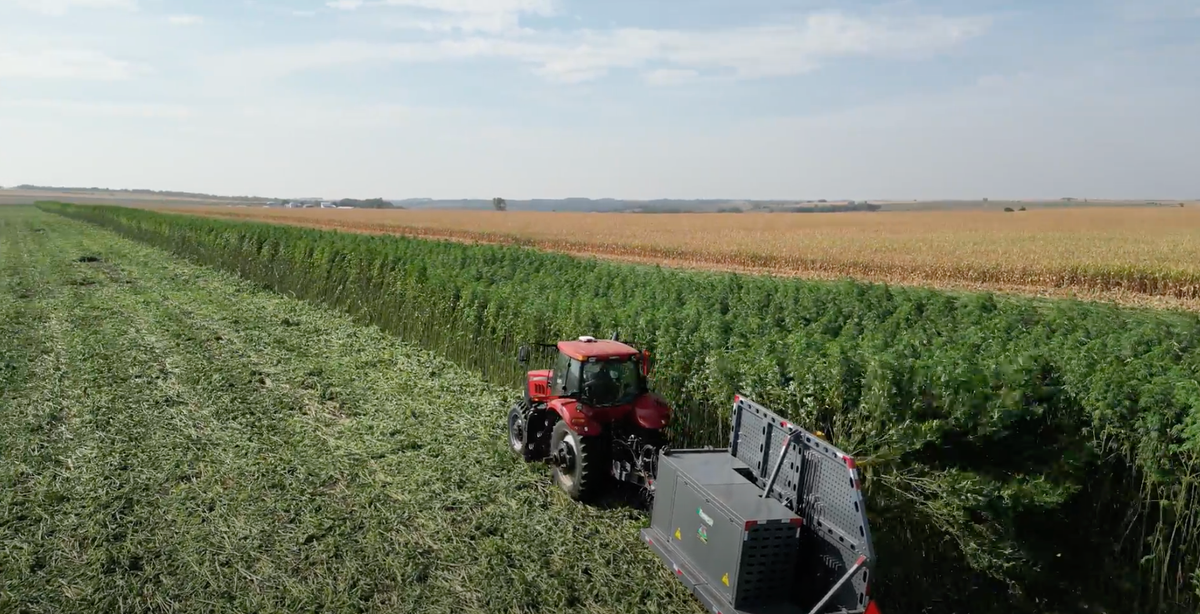
The state has also seen rapid expansion of milk processing, with new or expanded cheesemaking plants in Milbank (Valley Queen Cheese), Brookings (Bel Brands) and Lake Norden (Agropur). The increased processing capacity has allowed the state’s population of milk cows to more than double over roughly the past decade, from 91,000 cows in 2012 to about 210,000 in 2023, according to the U.S. Department of Agriculture.
According to the USDA, South Dakota dairy farmers produced 4.5 billion pounds of milk in 2023, up from 3.1 billion pounds in 2020 and 2 billion pounds in 2013.
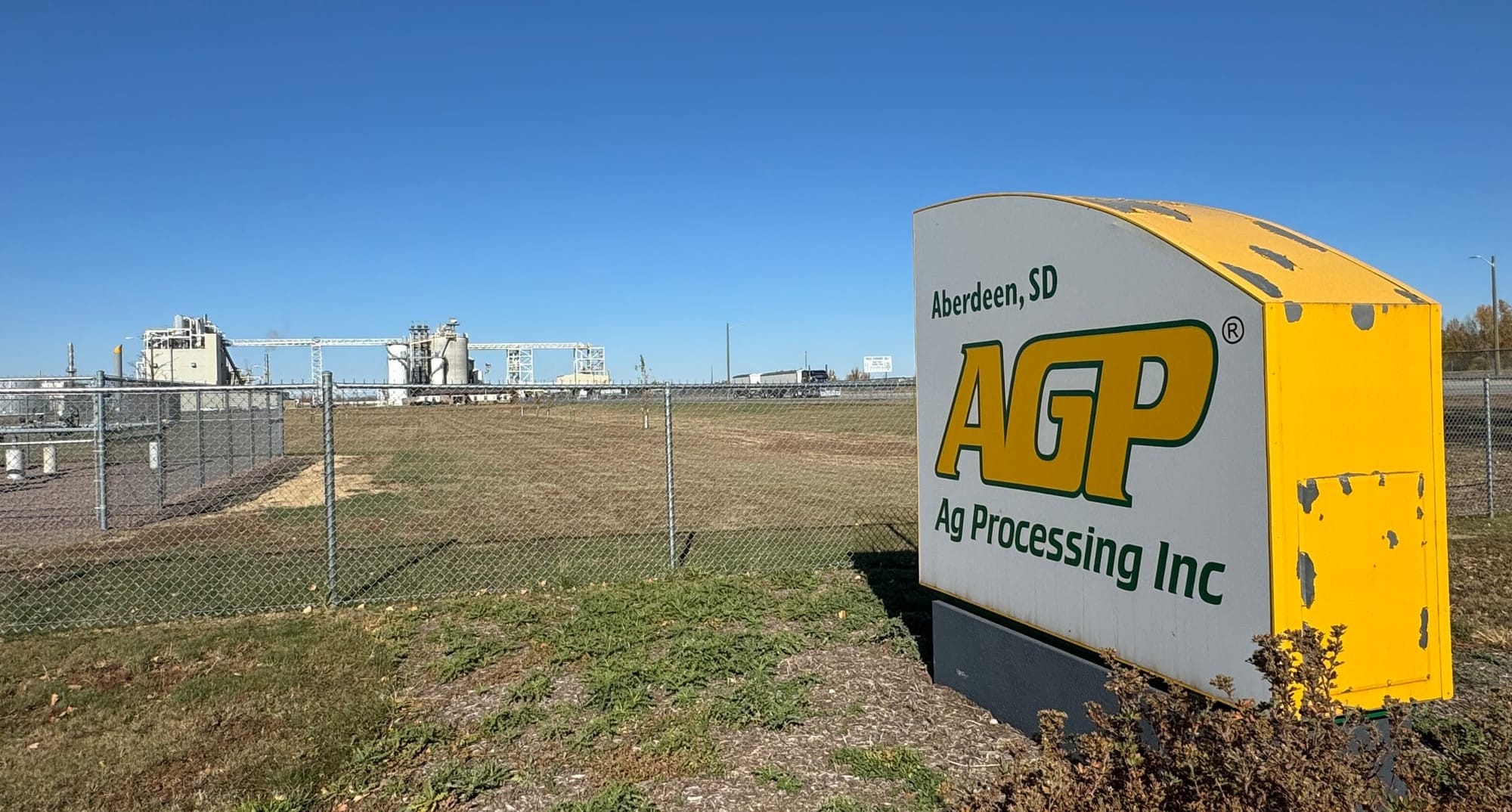
Agricultural processing plants serve as major employers in several South Dakota cities. The Dakota Provisions pork and poultry plant in Huron has variable employment that can range from 600 to 1,000. The state’s largest soybean plant, the AGP plant in Aberdeen that opened in 2019 at a cost of $300 million, has about 60 full-time workers.
In addition to jobs in the plant and an increase in production capacity for individual farmers, increased processing of commodities closer to where South Dakota farmers produce them creates jobs and revenue for local trucking companies, parts and maintenance firms, fuel providers and sellers of machinery, VanderWal said.
“We’re providing jobs or creating economic activity because those processing plants need supplies and parts and people to run them, and all those things that go along with that,” he said.
Beef industry sees potential in new, small local meat plants
A new trend in South Dakota agriculture could fundamentally change the economic landscape for the state’s $1 billion annual beef cattle industry
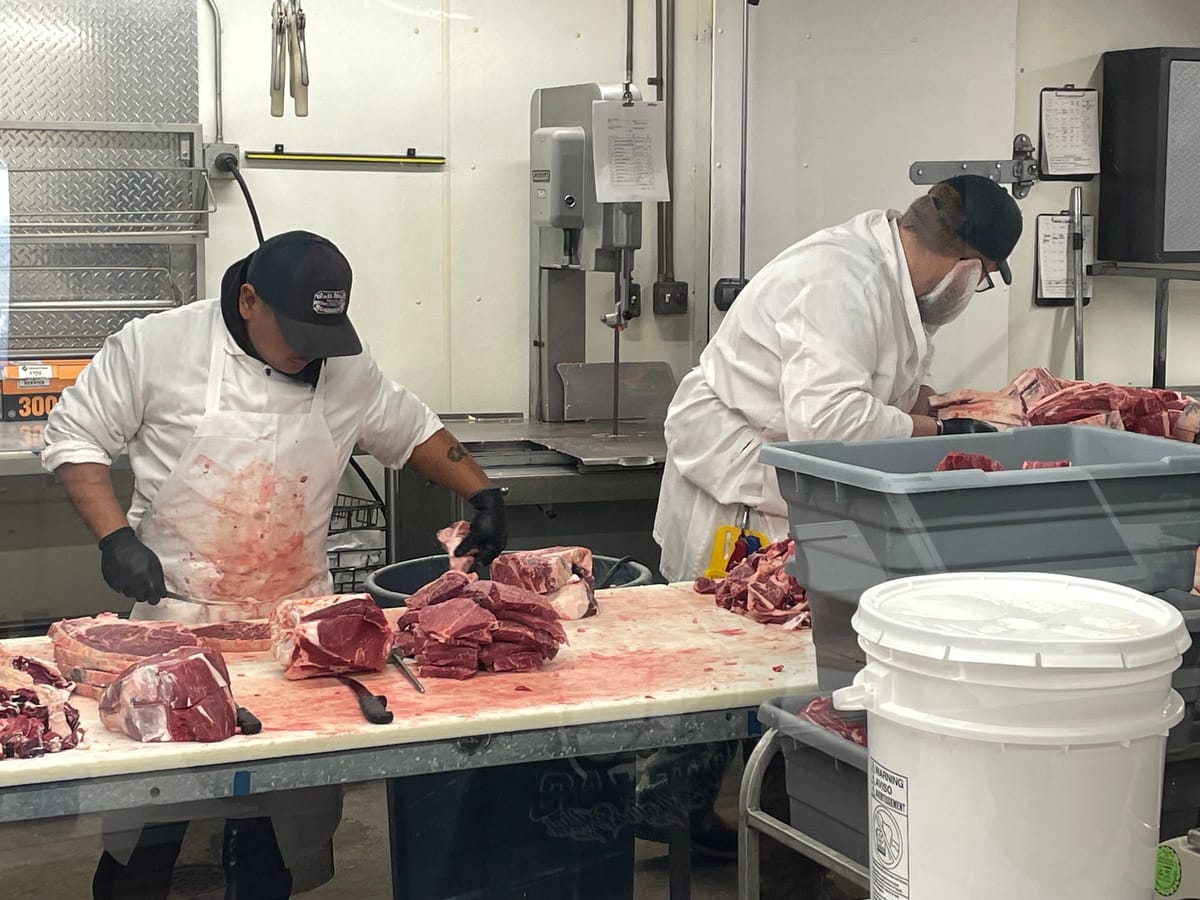
VanderWal said recent efforts to expand in-state processing of beef cattle, as reported by News Watch in 2023, would also generate new income and reduce costs for South Dakota ranchers, who raised 3.5 million cattle and calves in 2023, according to USDA data.
On Nov. 13, 2024, a 30,000-square-foot beef plant proposed for a site just north of New Underwood in Pennington County was awarded a $600,000 South Dakota Works Loan from the Governor’s Office of Economic Development for first-year operational funding.
“In the cattle industry, especially years ago, most of our feeder cattle actually got shipped out of state for feeding even, and then further processing,” he said. “We’ve put a lot of effort in the last few years into feeding them here. So we’re using our own feed stuff, so corn, basically, and silage and things like that. So then the next step to avoid having to haul them so far when they’re finished and ready for market, is to process them here.”

This story was produced by South Dakota News Watch, an independent, nonprofit news organization. Read more in-depth stories at sdnewswatch.org and sign up for an email every few days to get stories as soon as they’re published. Contact Bart Pfankuch at bart.pfankuch@sdnewswatch.org.
Related
A top recruiter says sports marketing roles are hot right…
Jobs are opening up in the sports industry as teams expand and money flows into the industry.Excel Search &
Public employees and the private job market: Where will fired…
Fired federal workers are looking at what their futures hold. One question that's come up: Can they find similar salaries and benefits in the private sector?
Mortgage and refinance rates today, March 8, 2025: Rates fall…
After two days of increases, mortgage rates are back down again today. According to Zillow, the average 30-year fixed rate has decreased by four basis points t
U.S. economy adds jobs as federal layoffs and rising unemployment…
Julia Coronado: I think it's too early to say that the U.S. is heading to a recession. Certainly, we have seen the U.S. just continue t










